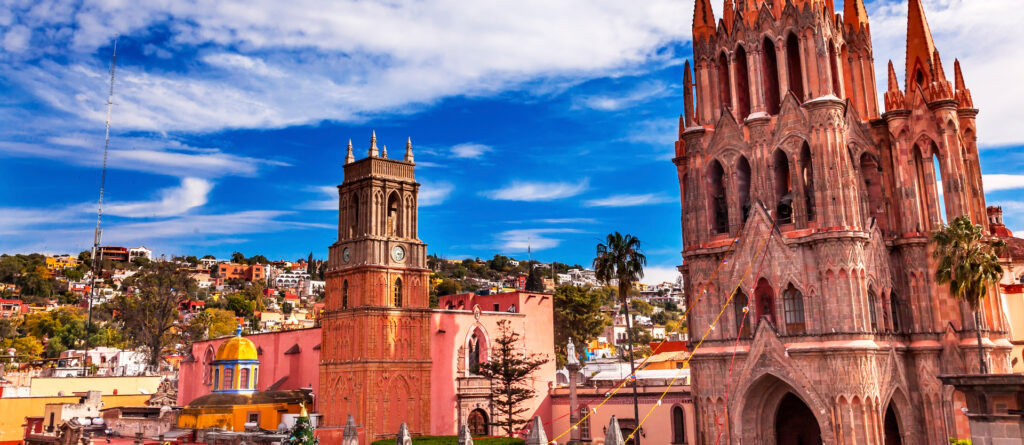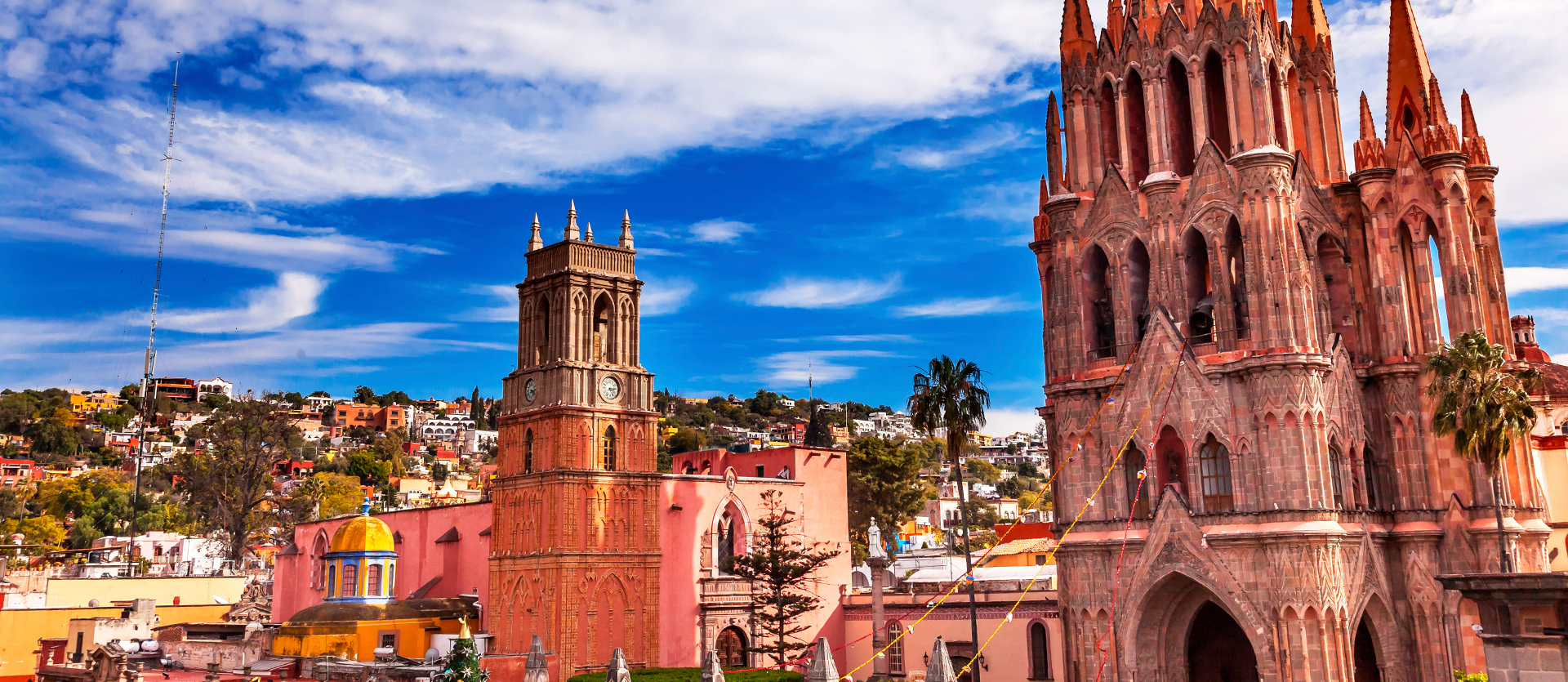Imagine wandering through narrow cobblestone streets, surrounded by vibrant colonial architecture and colorful bougainvillea. Picture yourself sipping a cup of rich, aromatic Mexican coffee in a quaint plaza, while the sound of mariachi music fills the air. Welcome to the enchanting colonial towns of Mexico’s Central Highlands. From the picturesque streets of Guanajuato to the charming plazas of San Miguel de Allende, these hidden gems offer a glimpse into Mexico’s rich cultural heritage and colonial past. Embark on a journey filled with history, beauty, and gastronomic delights as you uncover the captivating charm of these historic towns.
1. Guanajuato
Guanajuato, located in the Central Highlands of Mexico, is a captivating colonial town that boasts a rich history and a myriad of attractions. The town’s history dates back to the 16th century when silver was discovered in the nearby mountains, leading to an era of prosperity and growth. The city’s charming architecture reflects its colonial past, with colorful buildings, narrow cobblestone streets, and ornate churches.
1.1 History of Guanajuato
Guanajuato played a significant role during Mexico’s fight for independence. It was in this city that the first uprising against Spanish rule took place, known as the “Cry of Dolores.” This event marked the beginning of the Mexican War of Independence. The town continued to prosper during the 19th century as it became a hub for silver mining.
1.2 Attractions in Guanajuato
One of the must-visit attractions in Guanajuato is the famous Callejón del Beso, or the “Alley of the Kiss.” It is a narrow alley where two balconies face each other so closely that couples can lean out and share a kiss. Legend has it that couples who kiss on the third step of the alley will be blessed with seven years of happiness.
Another iconic site in Guanajuato is the stunning Basilica de Nuestra Señora de Guanajuato, a majestic church adorned with intricate baroque architecture. Inside the basilica, visitors can marvel at the beautiful religious artwork and experience a sense of peace and tranquility.
For those interested in art, the Diego Rivera Museum-House is a must-see. This museum is located in the home where renowned Mexican painter Diego Rivera was born. It showcases his artwork, personal belongings, and provides insight into his life and artistic journey.
2. San Miguel de Allende
San Miguel de Allende is another enchanting colonial town situated in the Central Highlands region of Mexico. Known for its vibrant art scene, colorful festivals, and Spanish colonial architecture, San Miguel de Allende has earned its place as a UNESCO World Heritage Site.
2.1 History of San Miguel de Allende
Founded in the 16th century, San Miguel de Allende initially thrived as a center for trade and agriculture. However, it faced a decline in the 19th century due to the Mexican War of Independence and subsequent economic challenges. Its revival as a popular tourist destination began in the mid-20th century when artists and intellectuals from around the world flocked to the town, drawn by its charm and bohemian atmosphere.
2.2 Attractions in San Miguel de Allende
The heart of San Miguel de Allende is the exquisite Parroquia de San Miguel Arcángel, a neo-gothic church that stands tall in the main square, or “El Jardín.” Its intricate spires and pink facade create a mesmerizing sight, especially when illuminated at night.
Art aficionados will appreciate the numerous art galleries scattered throughout the town, showcasing a diverse range of styles and mediums. The Instituto Allende, a prestigious art school, offers visitors the opportunity to view exhibitions and take classes in various artistic disciplines.
Additionally, San Miguel de Allende is well-known for its lively festivals. The most famous of these is the “La Calaca” festival, held every November to celebrate the Day of the Dead. During this time, the streets come alive with vibrant processions, elaborate costumes, and intricately designed altars honoring the deceased.
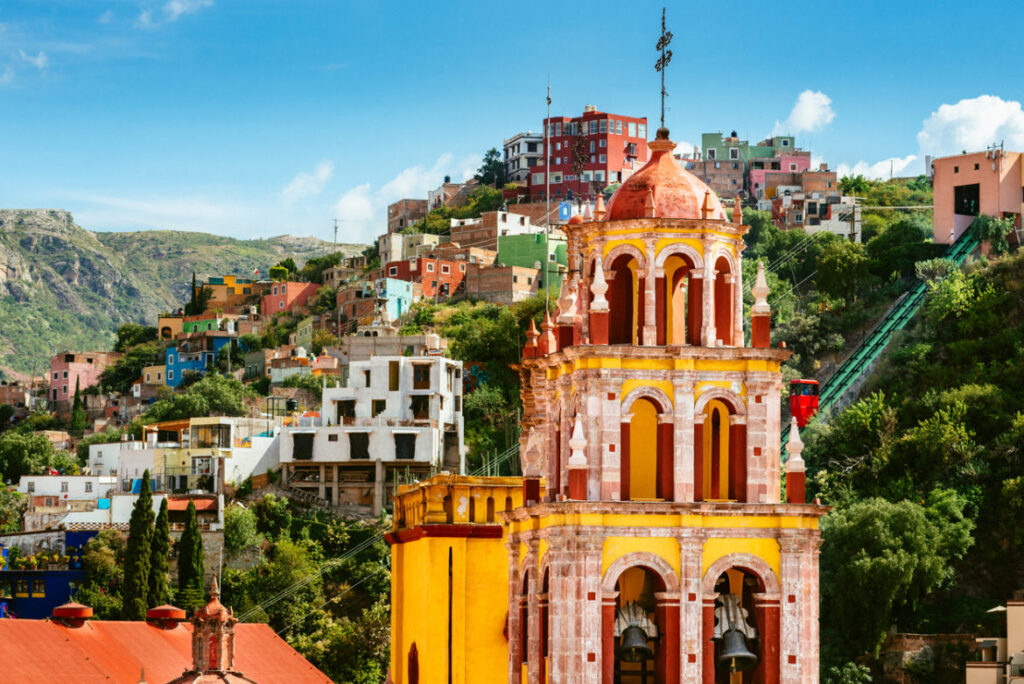
3. Querétaro
Querétaro is a historical gem located in the heart of Mexico’s Central Highlands. With its well-preserved colonial architecture and rich cultural heritage, Querétaro offers a glimpse into the country’s past.
3.1 History of Querétaro
Querétaro played a pivotal role in Mexico’s history, particularly during the movement for independence. It was in this city that the Constitution of 1917, the current governing document of Mexico, was drafted. Querétaro is also known for the Convent of Santa Cruz, where the Plan of Iguala, a document that declared Mexico’s independence, was signed.
3.2 Attractions in Querétaro
A must-visit attraction in Querétaro is the Historic Center, a UNESCO World Heritage Site. Strolling through its streets, you’ll be captivated by the well-preserved colonial buildings, grand plazas, and charming alleyways. The Plaza de Armas, flanked by the iconic Querétaro Cathedral, is a lively gathering place where locals and visitors can relax and soak in the city’s atmosphere.
Venture further into the city, and you’ll discover the Aqueduct of Querétaro, a remarkable feat of engineering. This aqueduct, built in the 18th century, stretches for nearly a kilometer and is an impressive testament to the region’s architectural heritage.
Querétaro is also famous for its delicious regional cuisine. Make sure to try the iconic dish known as enchiladas queretanas, which features tortillas stuffed with various fillings, topped with savory sauces, and served with a side of rich and creamy queso queretano.
4. Zacatecas
Zacatecas, located in north-central Mexico, is a captivating colonial town nestled in the picturesque valleys of the Sierra Madre Occidental. Its stunning architecture, vibrant cultural scene, and rich mining history make it a must-visit destination in Mexico’s Central Highlands.
4.1 History of Zacatecas
Zacatecas was founded in the 16th century after the discovery of silver deposits in the area. The city quickly became one of the most important mining centers in the world, attracting fortune-seekers from around the globe. Its wealth and prosperity led to the construction of grand colonial buildings, many of which still stand today as a testament to the city’s rich history.
4.2 Attractions in Zacatecas
One of the highlights of a visit to Zacatecas is a trip to the historic center, a UNESCO World Heritage Site. Here, you’ll find the stunning pink stone cathedral, a masterpiece of baroque architecture that dominates the city’s skyline. The cathedral houses beautiful religious artwork, including the renowned painting “The Ascension” by Miguel Cabrera.
For a unique perspective of the city, take a ride on the Teleférico, a cable car that offers panoramic views of Zacatecas. As you ascend above the city, you’ll be treated to breathtaking vistas of the surrounding valleys and mountains.
Immerse yourself in Zacatecas’s mining heritage by visiting the Eden Mine. Here, you can explore the underground tunnels and learn about the arduous conditions faced by the miners. Additionally, the Rafael Coronel Museum houses an extensive collection of Mexican folk art, including masks, puppets, and ceramics.
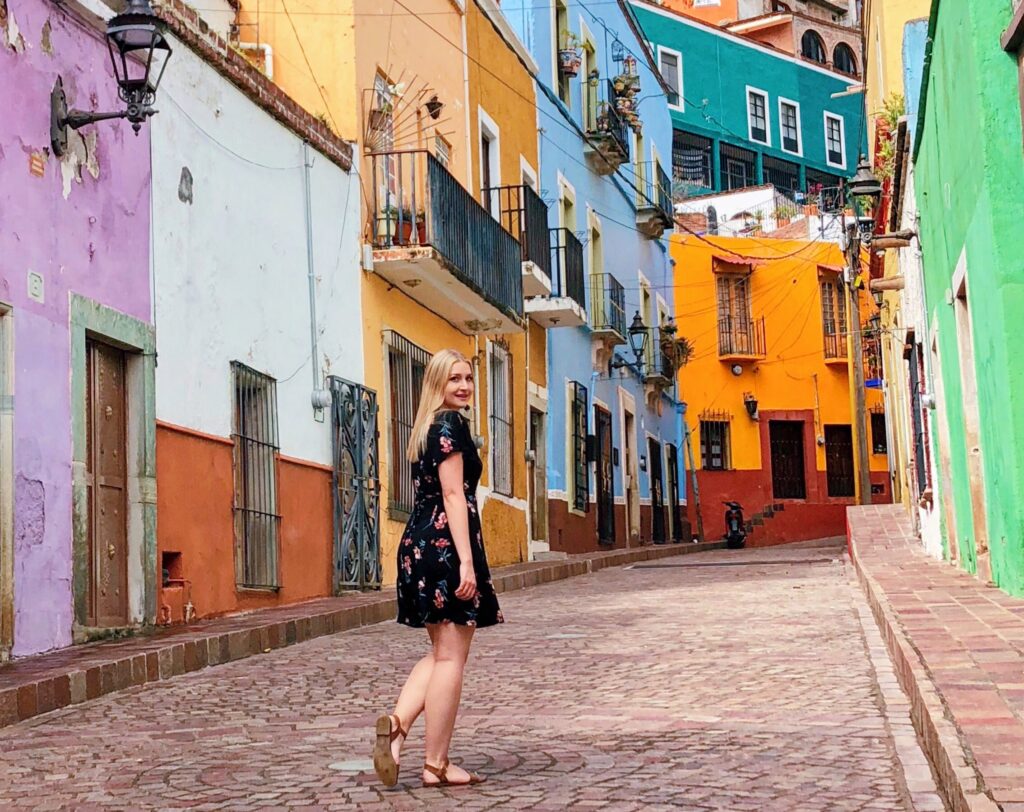
5. Morelia
Morelia, the capital of the state of Michoacán, is a stunning colonial city that exudes elegance and charm. With its well-preserved colonial architecture, vibrant cultural scene, and delicious cuisine, Morelia offers a truly immersive experience.
5.1 History of Morelia
Founded in 1541, Morelia was named after the Spanish viceroy Antonio de Mendoza, who was originally from the city of Guadalajara. The town played a prominent role during the Mexican War of Independence, and it was here that José María Morelos, a hero of the independence movement, rallied forces against Spanish rule.
5.2 Attractions in Morelia
A visit to Morelia would not be complete without exploring the Historic Center, a UNESCO World Heritage Site. The centerpiece of this area is the magnificent Morelia Cathedral, a towering example of colonial architecture. Step inside the cathedral to admire its beautiful altars, intricate artwork, and serene atmosphere.
Another architectural gem in Morelia is the Conservatorio de las Rosas, a former convent and now one of the oldest music conservatories in the Americas. The courtyard of the conservatory is a peaceful oasis, where you can sit and listen to the melodic sounds of students practicing their craft.
Food lovers will rejoice in Morelia’s gastronomic offerings. The city is famous for its traditional sweet treats, such as gazpachos (a type of jicama candy) and cajeta (caramel made from goat’s milk). Make sure to visit the Mercado de Dulces, a bustling market where you can sample and purchase these delectable treats.
6. Pátzcuaro
Pátzcuaro, located in the state of Michoacán, is a charming colonial town known for its rich indigenous heritage and picturesque surroundings. The town sits on the shores of Lake Pátzcuaro, providing breathtaking views and a tranquil atmosphere.
6.1 History of Pátzcuaro
Pátzcuaro has a long history dating back to pre-Hispanic times when it was inhabited by the Purépecha people. Even today, the indigenous culture remains vibrant, with many traditions and customs preserved.
6.2 Attractions in Pátzcuaro
One of the main attractions in Pátzcuaro is Janitzio Island, located in the middle of Lake Pátzcuaro. To reach the island, visitors can take a boat ride and experience the beauty of the lake and its surroundings. Janitzio is famous for its Day of the Dead celebrations when the island is adorned with colorful decorations and the local cemetery becomes a focal point of remembrance and celebration.
Exploring the streets of Pátzcuaro’s historic center is like stepping back in time. The town’s architectural charm can be experienced by visiting the Basilica of Our Lady of Health, a stunning church that showcases a fusion of indigenous and Spanish colonial influences. The nearby Plaza Vasco de Quiroga is a picturesque square where you can relax and enjoy the vibrant atmosphere.
Pátzcuaro is also renowned for its traditional arts and crafts. The artisans of the town produce exquisite pieces, including ceramics, woodwork, and textiles. The House of the Eleven Patios is a must-visit, housing numerous workshops and galleries showcasing the talents of these local artisans.
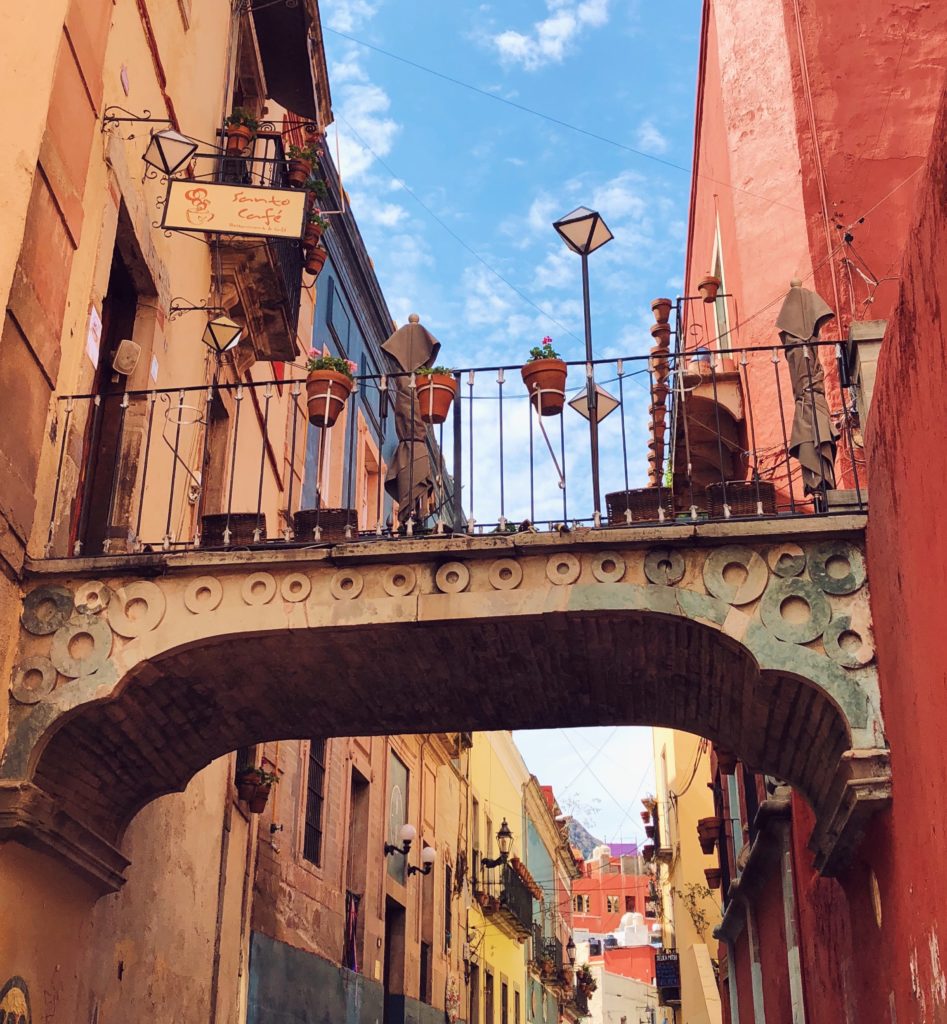
7. Guadalajara
Guadalajara, the capital of the state of Jalisco, is a vibrant and cosmopolitan city that seamlessly blends its rich colonial heritage with modern amenities. Known as the birthplace of mariachi music and tequila, Guadalajara offers a diverse range of attractions and experiences.
7.1 History of Guadalajara
Guadalajara was founded in 1542 and quickly became an important cultural and economic center. It played a vital role in Mexico’s fight for independence and was the birthplace of several influential figures, including Miguel Hidalgo, one of the heroes of the independence movement.
7.2 Attractions in Guadalajara
One of the iconic landmarks in Guadalajara is the Hospicio Cabañas, a UNESCO World Heritage Site. This historical building was originally a hospital and later became an orphanage. Today, it houses the Cabañas Cultural Institute and is known for its stunning murals painted by renowned artist José Clemente Orozco.
No visit to Guadalajara would be complete without experiencing the vibrant mariachi culture. The Plaza de los Mariachis is the hub of mariachi activity, where musicians gather to showcase their talents. Enjoy the lively music, traditional dances, and indulge in authentic Mexican cuisine at one of the many restaurants in the area.
For a taste of Guadalajara’s colonial past, explore the historic center and visit the Guadalajara Cathedral, an impressive symbol of the city. Admire the intricate architectural details and step inside to discover the stunning altars and religious artwork.
8. San Luis Potosí
San Luis Potosí, a picturesque colonial town in central Mexico, offers visitors a blend of history, culture, and natural beauty. With its well-preserved buildings, charming plazas, and proximity to stunning natural landscapes, San Luis Potosí is a hidden gem waiting to be explored.
8.1 History of San Luis Potosí
San Luis Potosí was founded in the 16th century during the Spanish colonial period. It quickly became a prosperous mining center, contributing to the region’s wealth. The town played a crucial role in Mexico’s fight for independence, and its heritage can be seen throughout the city.
8.2 Attractions in San Luis Potosí
Step into the heart of San Luis Potosí by visiting the Plaza de Armas, the city’s main square. Surrounded by colonial buildings, including the San Luis Potosí Cathedral and the Government Palace, the plaza is a vibrant gathering place where locals and visitors can soak in the atmosphere and enjoy live music and entertainment.
A visit to the historic center would be incomplete without exploring the famous Tangamanga Park. Divided into two sections, Tangamanga I and Tangamanga II, this expansive green space offers a peaceful retreat from the bustle of the city. Explore the walking trails, relax by the lakes, or enjoy a picnic with family and friends.
Nature lovers should not miss a trip to the Unique Garden and Biosphere Reserve of Xilitla, located just outside of San Luis Potosí. This surreal landscape features incredible sculptures and structures created by eccentric artist Edward James. Marvel at the towering concrete flowers, intricate mazes, and cascading waterfalls that blend seamlessly with the surrounding jungle.
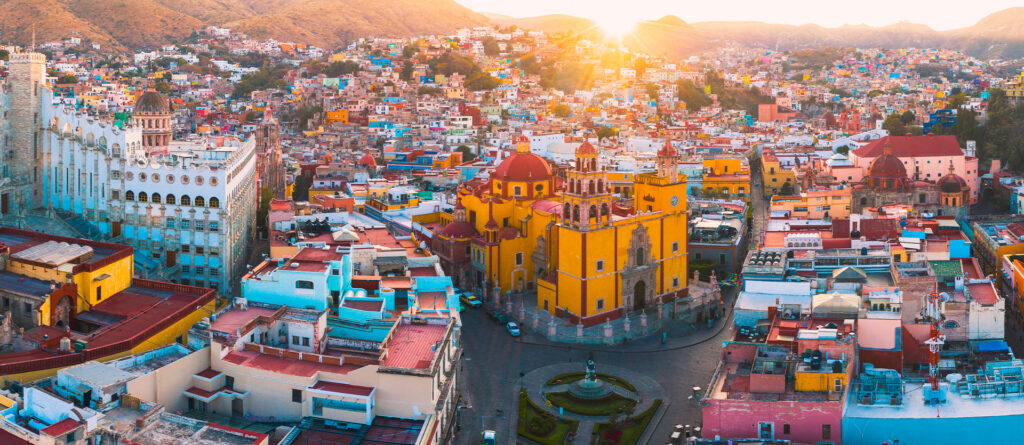
9. Aguascalientes
Aguascalientes, a city in central Mexico, is known for its vibrant cultural scene, colonial architecture, and hot springs. Steeped in history, this charming city offers a perfect blend of old-world charm and modern amenities.
9.1 History of Aguascalientes
Aguascalientes was founded in the 16th century and quickly became known for its abundant hot springs, which inspired its name, meaning “hot waters.” The city prospered due to its strategic location along an important trade route and its agricultural productivity.
9.2 Attractions in Aguascalientes
Aguascalientes is home to a variety of cultural attractions, including the Aguascalientes Museum, which houses a diverse collection of art, archaeology, and history. The museum provides visitors with a comprehensive overview of the region’s rich cultural heritage.
One of the architectural highlights of the city is the San Marcos National Fair. Held annually, this fair showcases the best of Mexican culture through events, exhibitions, concerts, and traditional food. The fairgrounds are also home to the San Marcos Garden, a beautiful park where locals and visitors can enjoy leisurely strolls and relax in the shade.
For a unique experience, visit the Ojocaliente Hot Springs, located just outside the city. Take a dip in the mineral-rich waters, known for their therapeutic properties, and relax in the tranquil surroundings. The hot springs are also surrounded by beautiful gardens, making it a perfect escape from the hustle and bustle of everyday life.
10. Dolores Hidalgo
Dolores Hidalgo, a small town in central Mexico, holds great historical significance as the birthplace of the Mexican War of Independence. With its charming streets, colorful facades, and historical landmarks, Dolores Hidalgo is a destination that should not be missed.
10.1 History of Dolores Hidalgo
Dolores Hidalgo is forever etched in Mexican history as the town where Miguel Hidalgo, a Catholic priest, delivered the famous “Cry of Dolores” in 1810. This event marked the beginning of the Mexican War of Independence and is celebrated every year on September 16th, Mexico’s Independence Day.
10.2 Attractions in Dolores Hidalgo
A visit to Dolores Hidalgo would be incomplete without a trip to the Parish of Our Lady of Dolores, where the Cry of Dolores took place. This beautiful church stands as a symbol of Mexico’s fight for independence and houses the remains of Miguel Hidalgo.
Explore the charming streets of Dolores Hidalgo and admire the colorful buildings adorned with intricate tilework. Many of these buildings showcase the town’s rich colonial heritage and offer a glimpse into its past.
Dolores Hidalgo is also known for its ceramic craftsmanship. The town boasts numerous workshops and stores where you can find a wide range of ceramic products, including beautifully painted tiles, decorative plates, and vibrant pottery. Don’t miss the chance to bring home a piece of Dolores Hidalgo’s artistic heritage.
In conclusion, Mexico’s Central Highlands are home to an array of enchanting colonial towns, each with its unique charm and rich history. From Guanajuato to Dolores Hidalgo, these destinations offer a captivating blend of colonial architecture, cultural heritage, and natural beauty. Whether you’re exploring the cobblestone streets, admiring the ornate churches, or immersing yourself in the local traditions, a journey through Mexico’s Central Highlands promises to be an unforgettable experience.
